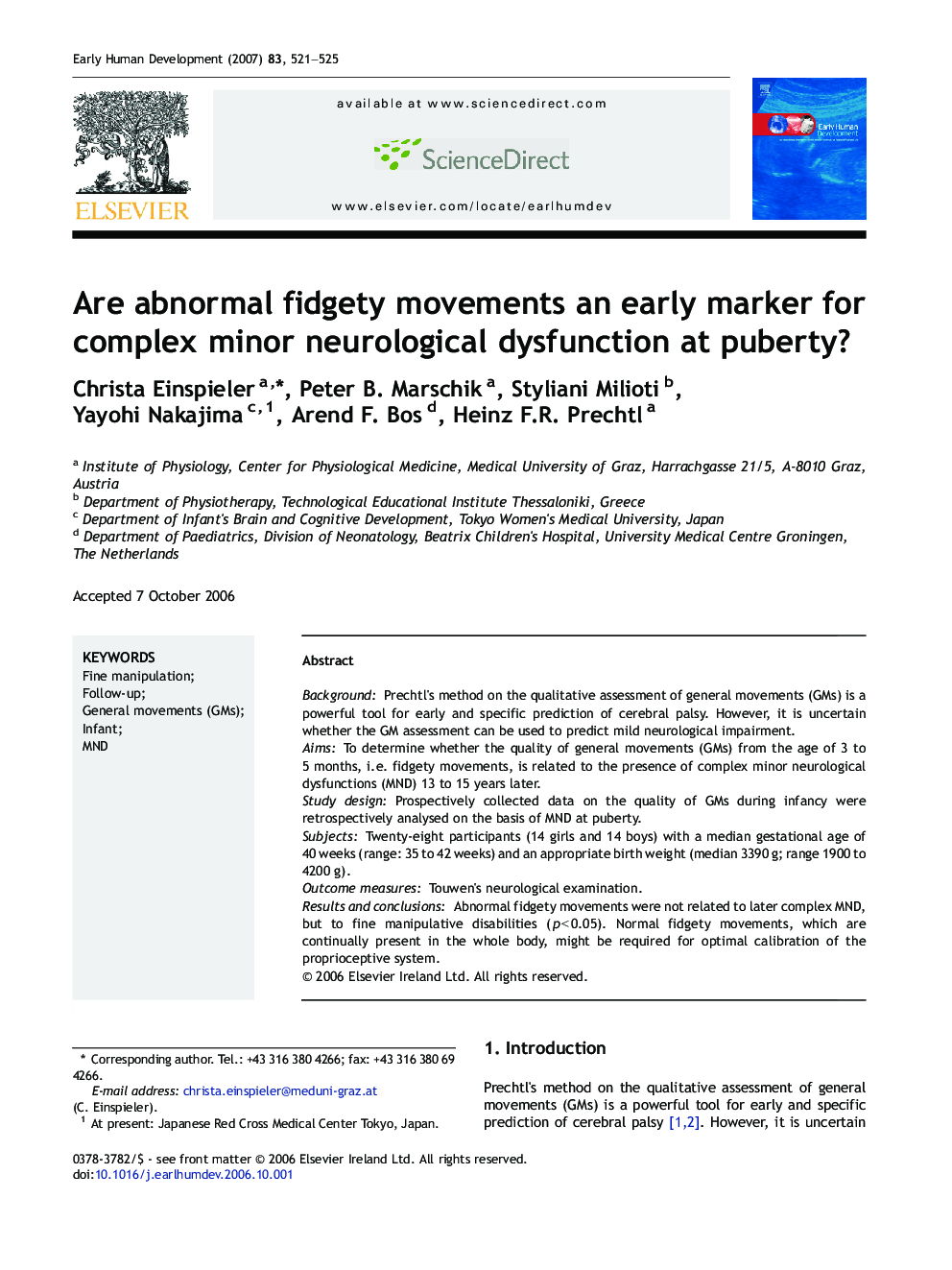| Article ID | Journal | Published Year | Pages | File Type |
|---|---|---|---|---|
| 3918617 | Early Human Development | 2007 | 5 Pages |
BackgroundPrechtl's method on the qualitative assessment of general movements (GMs) is a powerful tool for early and specific prediction of cerebral palsy. However, it is uncertain whether the GM assessment can be used to predict mild neurological impairment.AimsTo determine whether the quality of general movements (GMs) from the age of 3 to 5 months, i.e. fidgety movements, is related to the presence of complex minor neurological dysfunctions (MND) 13 to 15 years later.Study designProspectively collected data on the quality of GMs during infancy were retrospectively analysed on the basis of MND at puberty.SubjectsTwenty-eight participants (14 girls and 14 boys) with a median gestational age of 40 weeks (range: 35 to 42 weeks) and an appropriate birth weight (median 3390 g; range 1900 to 4200 g).Outcome measuresTouwen's neurological examination.Results and conclusionsAbnormal fidgety movements were not related to later complex MND, but to fine manipulative disabilities (p < 0.05). Normal fidgety movements, which are continually present in the whole body, might be required for optimal calibration of the proprioceptive system.
